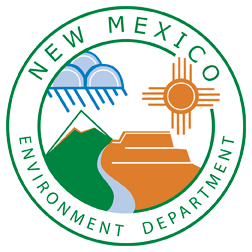The LCRR requires that certain public water systems provide Corrosion Control Treatment (CCT) under various scenarios. Full regulatory requirements for CCT can be found in 40 CFR 141.81 – Applicability of corrosion control treatment steps to small, medium, and large water systems.
When is Corrosion Control Treatment required?
The LCRR requires Corrosion Control Treatment for the following:
| Large water system (serving >50,000 people) |
|---|
| Large water systems with corrosion control treatment that exceed either the lead trigger level (0.010 mg/L or 10 ppb) or copper action level (1.3 mg/L or 1300 ppb) must complete the corrosion control treatment steps as specified in specified in 40 CFR 141.81(d) the LCRR. |
| Large water systems without corrosion control treatment with 90th percentile results that exceed either the lead practical quantitation level of 0.005 mg/L or the copper action level shall complete the corrosion control treatment steps specified in 40 CFR 141.81(e) of the LCRR. |
| Large water systems with corrosion control treatment with 90th percentile results that exceed the lead practical quantitation level but do not exceed lead trigger level or the copper action level may be required by the State to complete the corrosion control treatment steps as specified in 40 CFR 141.81(d) of the LCRR. |
| Medium-size water systems (serving >10,000 and ≤50,000 people) |
|---|
| Medium-size water systems with corrosion control treatment that exceed either the lead trigger level or copper action level must complete the corrosion control treatment steps specified in 40 CFR 141.81(d) of the LCRR. |
| Medium-size water systems without corrosion control treatment that exceed either the lead or copper action level shall complete the corrosion control treatment steps specified in 40 CFR 141.81(e) of the LCRR. |
| Medium-size water systems without corrosion control treatment that exceed the lead trigger level but do not exceed the lead or copper action levels must complete the treatment recommendation step specified in 40 CFR 141.81(e)(1) of the LCRR (Step 1). The water system must complete the remaining steps in 40 CFR 141.81(e) of the LCRR if it subsequently exceeds either the lead or copper action level. |
| Small water systems (serving ≤10,000 people) and non-transient, non-community water systems |
|---|
| Small and non-transient non-community water systems with corrosion control treatment that exceed the lead trigger level or the lead action level but do not exceed the copper action level, must complete the corrosion control treatment steps specified in 40 CFR 141.81(d) of the LCRR, if corrosion control treatment is approved by the State as a compliance option under 40 CFR 141.93(a). |
| Small and non-transient, non-community water systems with corrosion control treatment that exceed the copper action level must complete the corrosion control treatment steps specified in 40 CFR 141.81(d) of the LCRR. |
| Small and non-transient, non-community water systems without corrosion control treatment that exceed the lead action level must complete the corrosion control treatment steps specified in 40 CFR 141.81(e) of the LCRR if corrosion control treatment is approved by the State as a compliance option under 40 CFR 141.93. |
| Small and non-transient, non-community water systems without corrosion control treatment that exceed the copper action level shall complete the corrosion control treatment steps specified in 40 CFR 141.81(e) of the LCRR. |
What does it mean to have Optimized Corrosion Control?
A system is deemed to have optimal corrosion control treatment (OCCT) or re-optimized OCCT if the system satisfies one of the following:
- Small or medium-size water systems without CCT are deemed to have optimal corrosion control if the water system does not exceed the lead action level and copper action level during two consecutive 6-month tap sampling monitoring periods and remains at or below the lead trigger level and copper action level in all tap sampling periods
- Small or medium-size water systems with CCT are deemed to have optimal corrosion control treatment if the water system does not exceed the lead trigger level and copper action level during two consecutive 6-month monitoring periods and remains at or below the lead trigger level and copper action level.
- Small or medium-size systems with CCT that exceed the lead trigger level but do not exceed the lead and copper action levels during two consecutive 6-month monitoring periods and remain at or below the lead and copper action levels in all tap sampling periods are deemed to have re-optimized optimal corrosion control treatment if the system meets the requirements of this section of the LCRR.
- Any water system is deemed to have optimized or re-optimized corrosion control if it submits results of tap water monitoring demonstrating that the 90th percentile tap water lead level is less than or equal to the lead practical quantitation level of 0.005 mg/L and does not exceed the copper action level for two consecutive 6-month tap sampling monitoring periods, and does not have optimal water quality parameters that were set by the State.
Return to Lead and Copper Rule Revision

